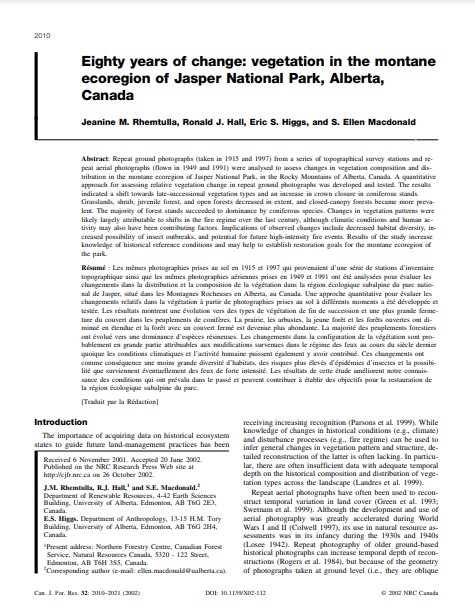Eighty years of change: vegetation in the montane ecoregion of Jasper National Park, Alberta, Canada
Bosque Modelo:
Foothills
Temática:
Gestión forestal
Tipo de documento:
Artículo científico
Resumen
Repeat ground photographs (taken in 1915 and 1997) from a series of topographical survey stations and repeat aerial photographs (flown in 1949 and 1991) were analysed to assess changes in vegetation composition and distribution in the montane ecoregion of Jasper National Park, in the Rocky Mountains of Alberta, Canada. A quantitative approach for assessing relative vegetation change in repeat ground photographs was developed and tested. The results indicated a shift towards late-successional vegetation types and an increase in crown closure in coniferous stands. Grasslands, shrub, juvenile forest, and open forests decreased in extent, and closed-canopy forests became more prevalent. The majority of forest stands succeeded to dominance by coniferous species. Changes in vegetation patterns were likely largely attributable to shifts in the fire regime over the last century, although climatic conditions and human activity may also have been contributing factors. Implications of observed changes include decreased habitat diversity, increased possibility of insect outbreaks, and potential for future high-intensity fire events. Results of the study increase knowledge of historical reference conditions and may help to establish restoration goals for the montane ecoregion of the park
Información Bibliográfica
Autor:
Rhemtulla, JM, RJ Hall, ES Higgs and SE Macdonald.
Revista:
Canadian Journal of Forest Research
Año:
2002
N°:
-
País :
Canadá
Páginas:
2010 - 2021
Volumen:
32
Idioma:
Ingles
Palabras claves
Vegetation, Change, impacts





